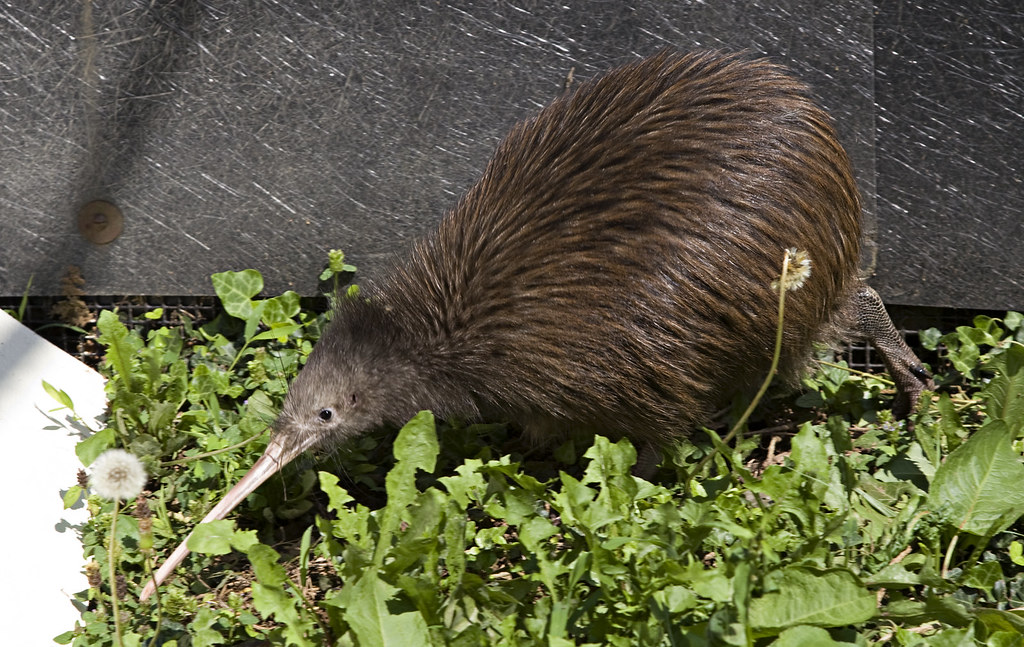– The distinctive anatomy and behavior of the Kiwi bird
– Conservation efforts and the critical status of Kiwi populations
– Kiwi birds in Maori culture and their national significance in New Zealand
– Habitat specifics and the ecological impact of invasive species on Kiwi survival
The distinctive anatomy and behavior of the Kiwi bird sets it apart as an icon of New Zealand’s wildlife. Kiwis are flightless birds, a feature they share with several other bird species native to New Zealand due to the historical lack of mammalian predators in their ecosystems. However, what truly distinguishes Kiwi birds is their remarkable sense of smell, uncommon in birds. This olfactory prowess is facilitated by nostrils at the end of their long beaks, enabling them to detect worms, insects, and berries buried deep underground. The reproductive anatomy of Kiwi birds is also noteworthy, with females carrying and laying eggs that can amount to 20% of their body weight, a feat unmatched by any other bird species. This, coupled with their nocturnal nature, makes Kiwi birds a fascinating subject of study within zoology and a captivating feature of New Zealand’s nocturnal wildlife tours.
Conservation efforts are paramount for the survival of Kiwi populations, which face the threat of extinction. Predation by invasive species such as stoats, dogs, and cats, along with habitat destruction, has led to dwindling Kiwi numbers. Current conservation strategies involve rigorous monitoring, protecting habitats, pest control, and community engagement projects to preserve this national symbol. The Department of Conservation in New Zealand spearheads various projects to safeguard Kiwi populations, including the Kiwi Recovery Plan, which focuses on growing populations in predator-free sanctuaries and eventually reintroducing them into their natural habitats. The involvement of local communities and indigenous Maori groups in conservation efforts underscores a collective national endeavor to protect Kiwi birds for future generations.
Kiwi birds hold a profound significance in Maori culture and are revered as taonga (treasure). They symbolize the deep connection between New Zealand’s indigenous people and their land, symbolizing protection, vigilance, and nobility. Maori folklore and legends often depict Kiwi birds as guardians of the forest, and their feathers are used in ceremonial cloaks known as kakahu, showcasing the profound respect and significance attributed to these birds. This cultural reverence further amplifies the motivation behind conservation efforts and promotes widespread cultural and environmental awareness regarding the preservation of Kiwi birds.
Kiwi birds’ habitat requirements are specific and integral to their survival, thriving in dense forest environments that offer ample coverage from predators and a rich food supply. The degradation of these environments through logging, agricultural expansion, and urban development poses significant challenges to Kiwi conservation. Efforts to restore and protect these natural habitats are critical. Additionally, introducing invasive species has severely impacted Kiwi populations by preying on eggs, juveniles, and adult birds. Control measures for these invasive predators are a central focus of conservation strategies, aiming to recreate a balanced ecosystem where Kiwi birds can flourish.
In light of these elements, the Kiwi bird serves as a national emblem of New Zealand and as a focal point in the broader discussion of biodiversity conservation, ecological balance, and the intricate relationship between human beings and the natural environment. The journey of Kiwi conservation is a testament to the importance of preserving natural heritage, reflecting a collective aspiration to maintain nature’s diversity. Through continued research, community involvement, and targeted conservation strategies, there is hope that the Kiwi bird will continue to inhabit New Zealand’s forests for generations to come, symbolizing the triumph of conservation efforts in a rapidly changing world.


